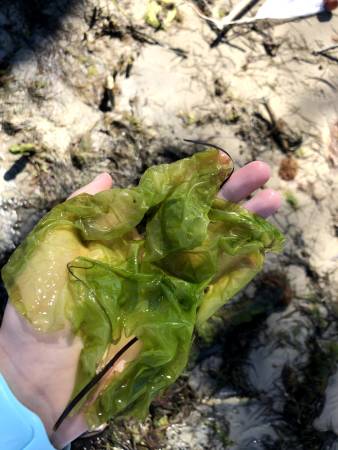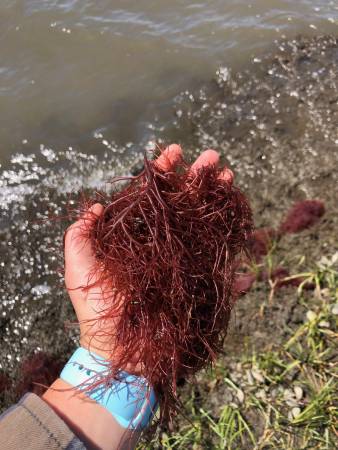
Seaweed, scientifically known as macroalgae, is found all over the world. Our Coastal Bays are no exception. Though they may seem like something just floating by, the power of these salty plants cannot be overrated. Seaweeds require salty water, nutrients and sunshine, but that is about it. They are tough plants and can withstand changes in temperature, levels of salt in the water, and can even survive being dried out for a time. In fact, seaweeds are the foundation of any successful and healthy marine ecosystem.
Algae are the base of the food web for all marine life. But they serve other purposes as well. In our Coastal Bays, they are a part of the estuarine habitat, providing a nursery for all kinds of aquatic species. They assist with aid in water quality, acting as a signal for the health of the ecosystem. It is used as a food source for the critters that helps them to grow strong. From the coral reefs to the Coastal Bays, seaweed is vital to support the tangled ecological web.

Seaweeds come in three types; Red, Green, and Brown. They are described as benthic, a scientific term meaning that they live on or near the seafloor. While not all seaweeds live exclusively on the seafloor, some float free. In our Coastal Bays, Red seaweeds like the Agrah’s Red Weed and Graceful Red Weed are common. Green seaweeds like sea lettuce and Green Hair algae are also commonly found. Fun Fact: In the world it is estimated that 6,200 Red and 1,800 Green Seaweeds are found in marine environments.
Without seaweed, every other creature is affected, including humans. And humans use plenty of it. For food; like sushi and nori. They are used in medicine and scientific research. It is being used as an alternative energy source. Like all plants, seaweeds use the sun’s rays to create food to sustain themselves. This process, called photosynthesis, uses carbon dioxide by removing it from the water. Oxygen is created as a by-product and is released into the air. Which makes seaweed a wonderful tool for mitigating the effects of a changing climate.
Harmful Algal Blooms
Every drop of baywater is full of algae and most of them are beneficial. Brown seaweeds are not common in our Bays, but when nutrients are pumped into the watershed, they can blossom into harmful algal blooms. These eager algae begin to grow uncontrollably. By blocking the sun and taking up all the oxygen to breathe, these blooms can choke out the space for other sea life to thrive. These blooms sound scary; and to many that rely on the bay for food and safety, it’s a very real problem. “We may see the earlier onset of blooms, we may see longer blooms…The easiest solution is to keep these events from occurring in the first place” said UM Center for Environmental Science ecologist Pat Glibert.
About the Author: Greg Atkin is the Community Engagement Specialist at the Maryland Coastal Bays Program. Their work aids the mission of the Program through the facilitation of education and interpretive programs, digital communications, diverse partnership development, and various community engagement projects.
Find out more at the Maryland Coastal Bays Program at our website: https://mdcoastalbays.org/

